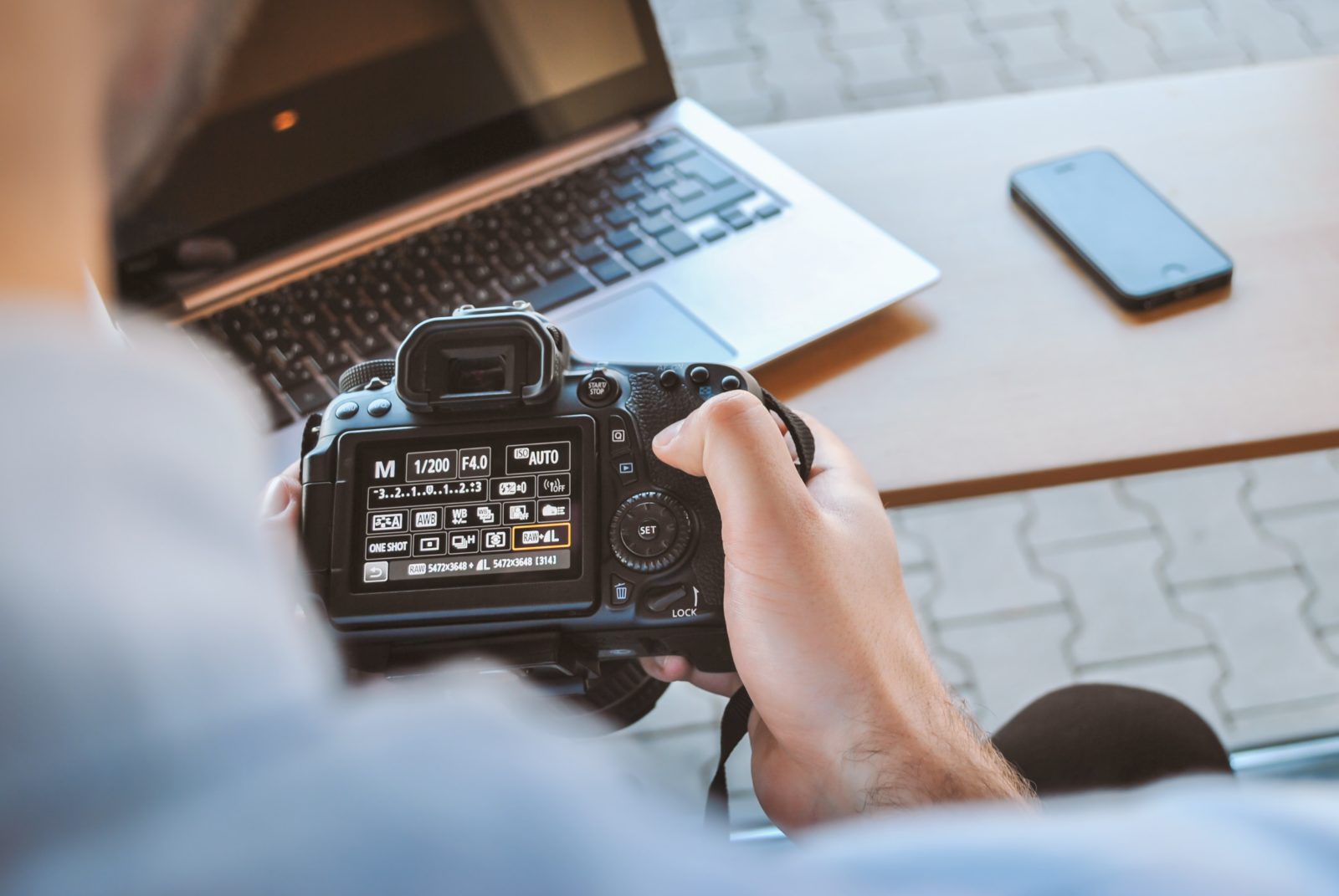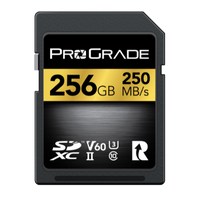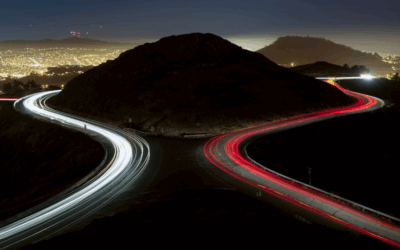Most digital cameras provide you with options to shoot either JPEG or RAW. Both have advantages and disadvantages, so photographers often debate which is better. To understand the debate, let’s first look at both file formats in more detail.
What is a JPEG Image?
JPEG stands for Joint Photographic Experts Group. It’s an organization that standardized the JPEG file format during the 90s. Since then, it’s by far the most widely used digital image format.
JPEG images are saved using lossy compression in which unnecessary information is discarded. So, when shooting JPEG, data from your camera’s sensor is processed and compressed before it gets saved on the memory card. The result is an image that takes up a lot less digital real estate on your memory card.
The trade-off is image quality. The higher the compression, the smaller the file size, but the lower the image quality. Almost all cameras allow you to tweak compression rates by adjusting the related settings, but only to a certain extent.
What is a Raw Image File?
RAW image files are often mistakenly characterized as “digital negatives.” In reality, they are neither negatives nor images. RAW image files are merely a collection of image-related sets of data. This data is composed of separate elements but can be manipulated as a unit by your computer using compatible software.
In other words, the RAW file carries all the information that the camera sensor captured. That includes radiometric elements of the scene, like physical information about light intensity and color. This information must first be electronically “developed“ for you or anyone else to see the actual image.
So, RAW datasets are more comparable to exposed but undeveloped film than negatives. That said, RAW has one significant difference from exposed celluloid film. You can only develop exposed celluloid film once. After that, it will be physically and irreversibly transformed. RAW image files, however, can be digitally “developed” over and over again. This process is non-destructive, and each step is reversible.
There is no universal RAW format. Every camera brand has its proprietary RAW format. Some even many. Nikon has NEF and NRW, Canon has CRW, CR2, and CR3, and Sony has ARW and SRF, to name a few. Each of them has to be independently supported by your post-processing software for you to manipulate the image.
What are the Advantages of Shooting RAW?
The main advantage of RAW image files is the amount of information they give and how they give it. The quantity of data is astronomical compared to JPEG, and none of it is soldered. This has several benefits:
1. RAW Image File Preserves the Highest Possible Quality of Your Photo
The RAW file retains all the unmodified, uncompressed data captured by the camera sensor to produce a viewable image. That contains both image metadata (including exact information about exposure, aperture, shutter, and ISO settings) and camera sensor metadata (including sensor characteristics, ICC profile, and attributes of the color filter array). So, every time you start developing your image, you get the highest quality obtainable.
Because RAW files are data-heavy and large, some camera manufacturers have created alternatives like Compressed RAW or Lossless Compressed RAW. These two are very different. Compressed RAW discards some of the image data. Lossless Compressed RAW doesn’t. Instead, it packs the data like a ZIP file. Compatible post-processing software allows you to decompress that data and expand the file back to its original size. Compressed RAW cannot be expanded later. So, some information is lost for good, but the amount is still negligible compared to JPEG.
2. RAW Will Forgive Some of Your Mistakes
Shooting RAW gives you peace of mind. You don’t have to stress about getting all the settings right. As long as you don’t overexpose or underexpose your image to the point where all the data is completely lost, RAW allows you to correct any exposure issues in the post.
The same goes for white balance. The RAW format doesn’t “bake” the color temperature of the light source in the image. So, you can adjust it later without introducing any weird artifacts to your photo.
Obviously, you don’t want to neglect the settings entirely. You should always aim to get everything right on camera. No point in creating unnecessary extra work for yourself. However, if a fast-passing once-in-a-lifetime opportunity presents itself, you don’t have to worry about the details and can simply whip out the camera and shoot.
3. RAW Gives You Higher Dynamic Range and Better Color Definition
JPEG images are captured with 8-bit color depth. This comes down to 16.8 million colors. 256 levels of red, green, and blue. At first glance, it may seem a lot, but when you compare it to RAW images, not so much.
Cameras that enable RAW file capture give you significantly higher color depth. The RAW format usually starts from 12-bits, capturing 4,096 tonal values per color channel. That equals 68.7 billion total colors. This is over 4,000% more colors than JPEG.
Higher-end cameras go even beyond that, recording 16-bit RAW images with 65,536 tonal variations per RGB channel. So, 65,536 x 65,536 x 65,536 total colors. That is 281,5 TRILLION colors for you to play around with.
This may seem like overkill, but it comes in handy in extreme situations. For example, when you need to correct grossly overexposed or underexposed pictures. Thanks to RAW’s ultra-wide color gamut, it retains color information even in super dark or bright areas of the image. This allows you to recover details that would otherwise be lost.
4. RAW Gives You Much Broader Post-Production Capabilities
Shooting RAW assures you’re not working with degraded images.
There are no compression artifacts you have to navigate around. The higher quality of the image allows for endless iterations of edits, preserving the most delicate details intact.
Among all else, the RAW file gives much more data for denoising and sharpening algorithms, so they can work much more effectively.
5. RAW is Future Proof
Image processing software is improving every day. AI/ML technology is quickly becoming a new norm. So, keeping your RAW files allows you to re-visit and re-process your photos in the future using the most recent software technology.
The fact that RAW files store information not only about the scene but also about the equipment used to capture that scene (including the camera and lens), they for sure provide a much greater input for whatever future editing software.
Bottom Line
We are on a journey. As photographers, we are constantly learning to take better photos. We all know there’s no one simple solution for improving. It’s not just about mastering lighting or buying better gear. A good photographer can create amazing art with the cheapest camera in a pitch-black room using just a flashlight, while a not-so-good photographer won’t deliver anything even with the most expensive setup.
What helps us improve? Post-processing, for starters. It not only improves the photo we edit but, in a way, also future photos. While we work on the details to fine-tune our images, we see exactly where we fell short. It’s a process where our photos give us honest and thorough feedback. So, next time we’re out shooting, we can adjust accordingly. That way, step by step, we get better at taking photos that tell engaging stories.
To get the most out of this process – editing the data captured by a camera – we need unprocessed pixel data, and only RAW files will give us that.
Memory Cards for Shooting RAW Files
Shooting RAW equals larger files. Larger files equal higher data rates. Not all memory cards can handle that, especially when bursting photos. ProGrade Digital memory cards are created for professional photographers and built with high-resolution RAW files in mind.





